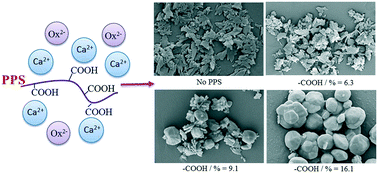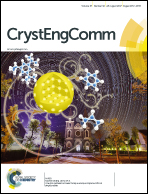Effects of plant polysaccharides with different carboxyl group contents on calcium oxalate crystal growth†
Abstract
The effects of five plant polysaccharides (PPSs) with molecular weights of ∼4000 Da and different carboxylic group (–COOH) contents on the crystal growth of calcium oxalate (CaOx) were comparatively studied. The five PPSs were obtained from Ziziphus jujuba, Auricularia auricular, Lentinan, Lycium barbarum, and Astragalus (AS-5) with –COOH contents of 6.3%, 8.9%, 9.1%, 13.6%, and 16.1%, respectively. X-ray diffraction, Fourier transform infrared spectroscopy, and scanning electron microscopy results revealed that all five PPSs inhibited calcium oxalate monohydrate (COM) growth, induced calcium oxalate dihydrate (COD) formation, and reduced crystal aggregation. The inductively coupled plasma emission spectra of the PPSs revealed increased concentration of soluble Ca2+ ions and reduced amount of CaOx precipitates. Furthermore, the PPSs increased the absolute value of zeta potential on the crystal surface and thus favorably inhibited crystal aggregation. The abilities of PPSs to inhibit COM growth and aggregation and induce COD formation are positively correlated to their –COOH contents. At 0.1–100 μg mL−1, all PPSs had low toxicity to HK-2 cells. These results indicated that these PPSs, especially AS-5 with the highest –COOH content, are potential drugs for the prevention and treatment of CaOx stones.



 Please wait while we load your content...
Please wait while we load your content...